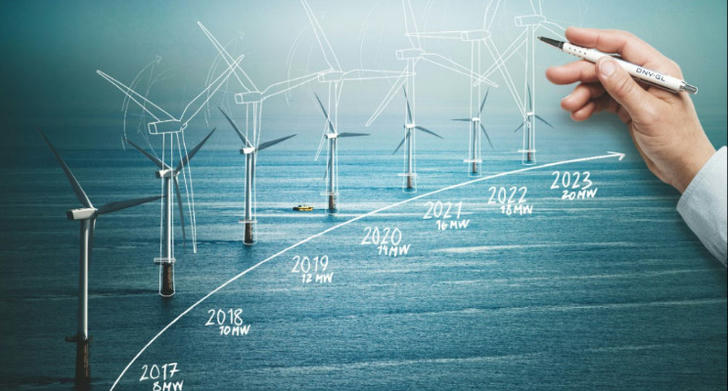The Future of Clean Energy: Why Wind Power is a Smart Investment for Americans
In the face of growing concerns about climate change, rising energy costs, and the need for sustainable energy sources, wind energy is emerging as one of the most promising sectors for investors in the United States. With federal incentives, technological advancements, and increasing demand for clean energy, wind power offers a unique opportunity for those looking to make a smart and socially responsible investment.

Why Wind Energy?
Renewable and Sustainable
Wind energy is clean, renewable, and sustainable. Unlike fossil fuels, it doesn’t deplete finite resources or emit harmful pollutants into the atmosphere. As long as the wind blows, we can generate electricity. This makes it a highly sustainable form of energy for the long term, appealing to both environmentally conscious investors and those looking for stable, long-term returns.
Rapid Growth of Wind Power in the U.S.
The United States is a global leader in wind energy production. According to the U.S. Energy Information Administration (EIA), wind power is the largest source of renewable electricity generation in the country, accounting for over 10% of total electricity generation in 2023.
In particular, the Great Plains region—including states like Texas, Iowa, and Oklahoma—has some of the best wind resources in the world. As more wind farms are being built across the U.S., the country’s wind capacity continues to expand, providing more opportunities for investors to capitalize on this growing sector.
Federal Support and Tax Incentives
The U.S. government has been actively supporting the development of wind energy through tax incentives and federal grants. The Production Tax Credit (PTC), a key federal subsidy for wind energy projects, has been a major driver of wind power’s rapid growth in the U.S. It offers a per-kilowatt-hour (kWh) tax credit for electricity generated by qualified renewable energy projects. The Inflation Reduction Act of 2022 extended these credits, further encouraging investment in wind power.
By investing in wind energy, individuals and corporations can benefit not only from potential tax advantages but also from the increased demand for renewable energy from both consumers and governments.
The Financial Benefits of Wind Energy Investments
Stable Long-Term Returns
Wind energy projects often involve long-term contracts with utility companies, providing investors with stable, predictable cash flows. These contracts, known as Power Purchase Agreements (PPAs), allow wind farms to sell electricity to utilities at fixed prices for periods that typically last 10 to 25 years. This stability reduces risk and makes wind energy an attractive investment for those seeking consistent returns.
Low Operating Costs
After the initial costs of constructing a wind farm, the ongoing operating expenses are relatively low. Wind itself is free, and maintenance costs are manageable, particularly as technology improves. As a result, wind energy projects can remain highly profitable even during periods of economic uncertainty.
Technological Advancements
Technological innovation is making wind energy cheaper and more efficient. New turbine designs are capturing more wind at lower speeds, and advances in energy storage technology allow for better management of electricity generation. These advancements are driving down costs and increasing the competitiveness of wind energy, making it a more attractive option for investors compared to traditional energy sources like coal and natural gas.
How to Invest in Wind Energy
For those interested in investing in wind energy, there are several options available:
Direct Investment in Wind Farms
One option is to directly invest in wind farm projects. This can be done through private equity firms that specialize in renewable energy or by partnering with developers looking for capital to build or expand wind farms. While this approach can offer high returns, it typically requires a larger upfront investment and may be best suited for institutional investors or high-net-worth individuals.
Publicly Traded Wind Energy Companies
For individual investors looking for more accessible entry points, many publicly traded companies are involved in wind energy. These include turbine manufacturers like Vestas and Siemens Gamesa, as well as utilities that generate a significant portion of their electricity from wind, such as NextEra Energy and Iberdrola. Investing in these companies through stocks or mutual funds allows individuals to gain exposure to the wind energy sector without directly funding wind farm projects.
Renewable Energy ETFs
For a more diversified approach, investors can consider Renewable Energy Exchange-Traded Funds (ETFs). These funds invest in a basket of companies across the renewable energy sector, including wind, solar, and energy storage. Examples include iShares Global Clean Energy ETF (ICLN) and First Trust Global Wind Energy ETF (FAN). This option provides exposure to multiple companies in the wind energy space, reducing risk while still allowing investors to capitalize on the sector’s growth.
The Future of Wind Energy Investment
The future of wind energy in the U.S. looks incredibly bright. As the nation continues its transition toward a carbon-neutral economy, the demand for clean energy sources will only increase. Wind power, with its proven track record and government backing, will play a central role in this transformation.
Moreover, as public awareness of climate change grows, environmental, social, and governance (ESG) investing is gaining popularity. Wind energy aligns perfectly with these values, providing an opportunity for investors to not only grow their wealth but also make a positive impact on the planet.
Conclusion: Why Now is the Time to Invest in Wind Power
Investing in wind energy is more than just a smart financial decision; it’s an investment in the future of our planet. With a combination of federal support, technological innovation, and growing consumer demand, wind power presents a unique opportunity for American investors to enjoy both financial rewards and social responsibility.
As wind turbines continue to spin across the Great Plains and offshore, they’re not just generating electricity—they’re generating wealth. Now is the time to catch the wind and let it propel your portfolio to new heights.
